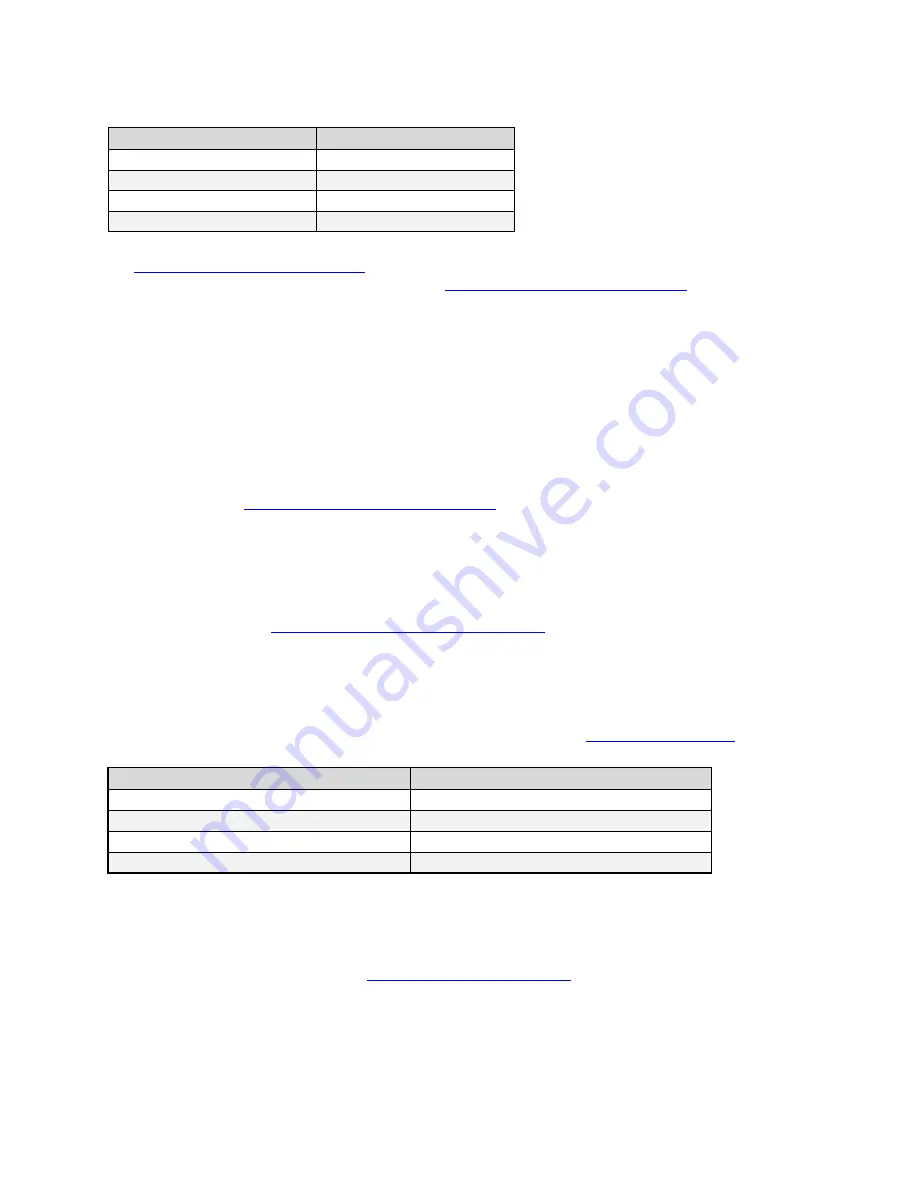
Piranha HN RoHS User Manual
03-032-20135-00
Teledyne DALSA
14
Table 6: Teledyne DALSA Camera Control Configuration
Signal
Configuration
CC1
EXSYNC
CC2
Spare
CC3
Forward
CC4
Spare
See
Camera Link Configuration Tables
for the complete Teledyne DALSA Camera Link configuration
tables, and refer to the Teledyne DALSA Web site,
Knowledge Center application notes
, for the official
Camera Link documents.
Input Signals, Camera Link
The camera accepts control inputs through the Camera Link MDR26F connector.
The camera ships in internal sync, internal programmed integration (exposure mode 7) TDI Mode.
EXSYNC (Triggers Frame Readout)
Frame rate can be set internally using the serial interface. The external control signal EXSYNC is optional
and enabled through the serial interface. This camera uses the
falling edge of EXSYNC
to trigger pixel
readout. See section
Exposure Mode and Line/Frame Rate
for details on how to set frame times, exposure
times, and camera modes.
Direction Control
You control the CCD shift direction through the serial interface. With the software command,
scd
, you
determine whether the direction control is set via software control or via the Camera Link control signal
on CC3. Refer to section
Setting the Camera’s CCD Shift Direction
for details.
Output Signals, Camera Link
These signals indicate when data is valid, allowing you to clock the data from the camera to your
acquisition system. These signals are part of the Camera Link configuration and you should refer to the
Teledyne DALSA Camera Link Implementation Road Map, available at
the Knowledge Center
, for the
standard location of these signals.
Clocking Signal
Indicates
LVAL (high)
Outputting valid line
DVAL (high)
Valid data
STROBE (rising edge)
Valid data
FVAL (high)
Outputting valid frame
IMPORTANT:
This camera’s data should be sampled on the rising edge of STROBE.
The camera internally digitizes to 14 bits and outputs 8 or 12 MSB bits depending on the camera’s
Camera Link operating mode. Refer to
Setting the Camera Link Mode
for details.














































